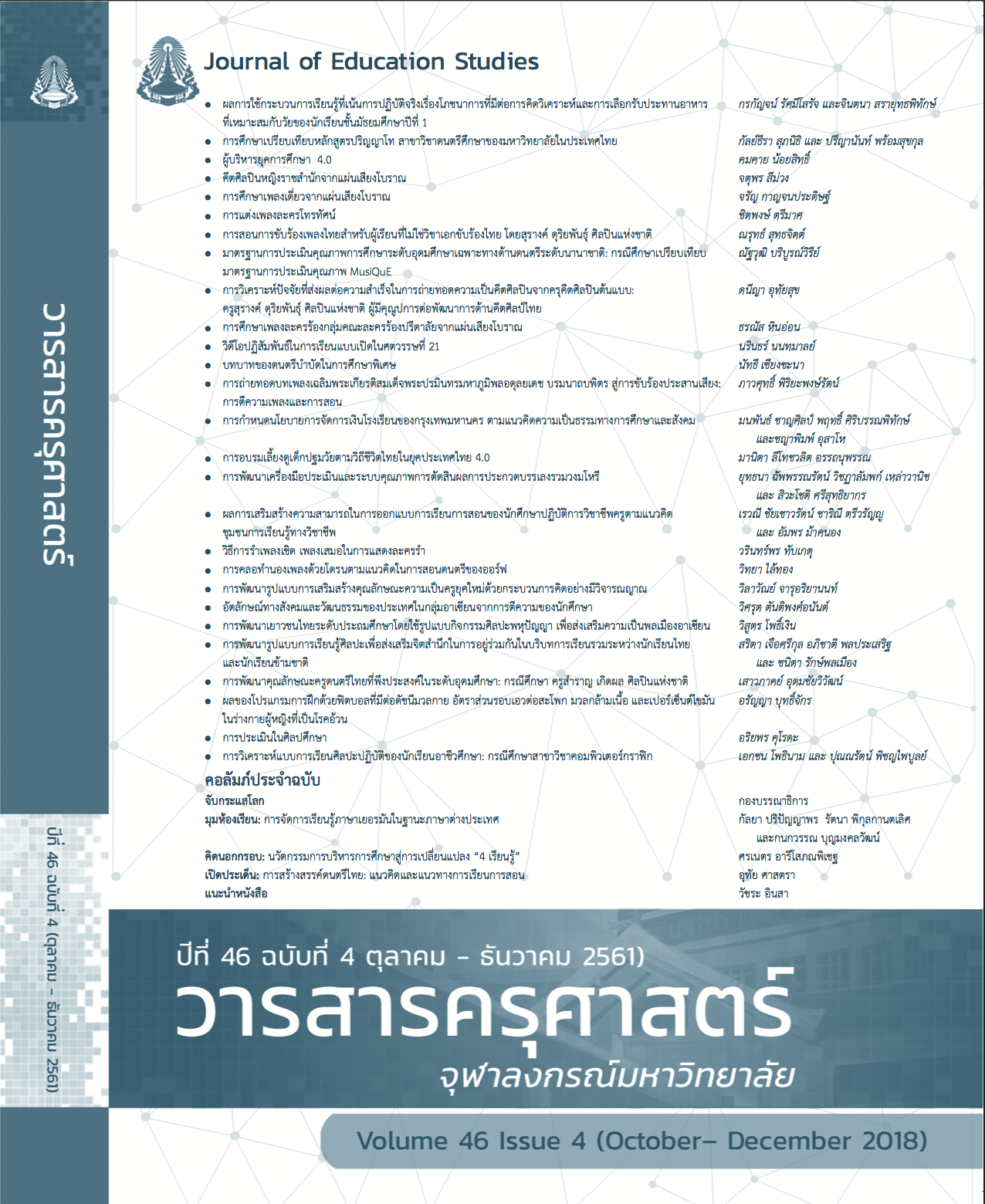การสอนการขับร้องเพลงไทยสำหรับผู้เรียนที่ไม่ใช่วิชาเอกขับร้องไทย โดย สุรางค์ ดุริยพันธุ์ ศิลปินแห่งชาติ
Keywords:
SINGING TEACHING, THAI CLASSICAL SONG, SURANG DURIYABHANAbstract
The objective of this research was to study Thai classical singing teaching for Non-Thai Music Major Students by Surang Duriyabhan, a National Artist. The methodologies used were interviewing and surveying. The key informant was Surang Duriyabhan. The sample group, using simple random sampling, was 20 Non-Thai Music Major Students having been studying 2737112 Thai Classical Singing at Music Education Division, Arts, Music, and Dance Education Department, Faculty of Education, Chulalongkorn University. The data collected included in-depth interviews and surveys. Analyses of the data involved interpretation of in-depth interviews and using descriptive statistics for a questionnaire. The results were presented as a descriptive method.
The results showed that Thai classical singing teaching for Non-Thai Music Major Students by Surang Duriyabhan can be categorised into 4 dimensions: 1) Content: Placing the emphasis on the understanding of the principles of Thai classical singing consisting of 5 elements: (1) lyrics, (2) melody, (3) voice, (4) rhythm and (5) breathing; and 3 major Thai classical pieces composed by Surang Duriyabhan are Samsieng Pairaw, Huachai Sieng Ung and Kolaviti Kubrong Pleng Thai used for the singing practices; 2) Teaching process: the techniques used were explaining, demonstrating and advising; the arrangement of content is strictly planned from simple to complex, media including Thai songs, musical notations, electronic media, and Thai music instruments; evaluation consisting of authentic assessment, formative and summative evaluation; 3) Teacher: having specialization in Thai classical singing and experiences in teaching Thai classical singing for a long time, having compassion and kindness, sense of humor, and understanding of students’ individual differences; 4) Learner: understanding the basic principles of the Thai classical singing style, being able to sing basic Thai classical pieces, being able to learn with effective effort, making some records, and intending to practice singing regularly.




